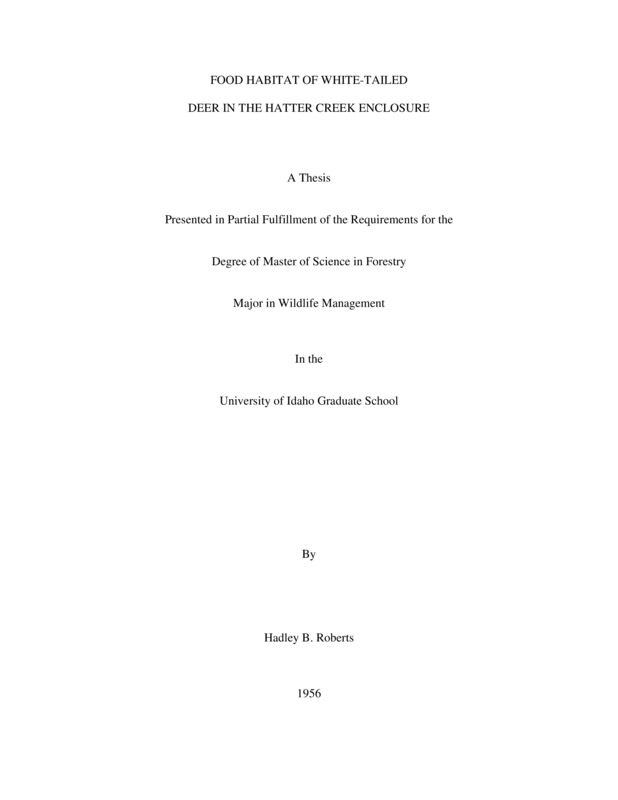PDF PREVIEW
Food Habitat of White-Tailed Deer in the Hatter Creek Enclosure Item Info
Download Preview PDF
Please note: PDF file may not be complete document.
- Title:
- Food Habitat of White-Tailed Deer in the Hatter Creek Enclosure
- Creator:
- Roberts, Hadley B.
- Date Created:
- 1956
- Description:
- From the results of this study, it was found that redstem ceanothus is the most important year around food plant of white-tailed deer in the Hatter Creek Enclosure, and that this species should be designated as the key plant on which to base management of the deer. Another study is now being carried on to determine proper use of the redstem ceanothus after the growing season. The current study showed that considerable browsing takes place during the summer, and it is recommended that the research be expanded to obtain data regarding the effects of browsing during the growing season as well. The Hatter Creek Enclosure was established primarily for research on white-tailed deer on an intensive scale. One phase of research that has not yet been studied is the carrying capacity. Therefore, it is recommended that a survey be made of the available browse on a minimum winter range. These data, plus a reasonably accurate estimate of the present population and additional productivity information, would determine an accurate annual allowable kill for the area. After carrying capacity has been determined, the next step should be an attempt at experimental habitat improvement, in the form of logging. At the present time, most of the heaviest used winter range is in the timbered portions at the northern end of the enclosure. These areas produce small amounts of the more palatable winter browse species. It is recommended that these areas be logged in small blocks, not to exceed two or three acres, in order to encourage growth of these plants. It is also recommended that detailed records be kept of the vegetational composition, both before and at regular intervals after the logging, to see if the desired ecological changes have taken place. The only conclusions that can be drawn from the productivity phase of this study, are that white-tail does sampled at Hatter Creek bred for the first time at approximately 16 months of age, and usually produce a single fawn which is born during the month of June.
- Document Type:
- Thesis
- Library Call Number:
- QL737.U55R62
- Subjects:
- white-tailed deer food habitat of white-tailed deer browse wildlife
- UIEF Unit:
- East Hatter Creek
- Location:
- UIEF; East Hatter Creek
- Latitude:
- 46.836471
- Longitude:
- -116.802608
- Department:
- Department of Wildlife Resources
- Type:
- Text
- Format:
- application/pdf
Source
- Preferred Citation:
- "Food Habitat of White-Tailed Deer in the Hatter Creek Enclosure", UIEF Research Exchange, University of Idaho Library Digital Collections, https://www.lib.uidaho.edu/digital/uief/items/uief_0129.html
Rights
- Rights:
- In copyright, educational use permitted.
- Standardized Rights:
- http://rightsstatements.org/vocab/InC-EDU/1.0/

